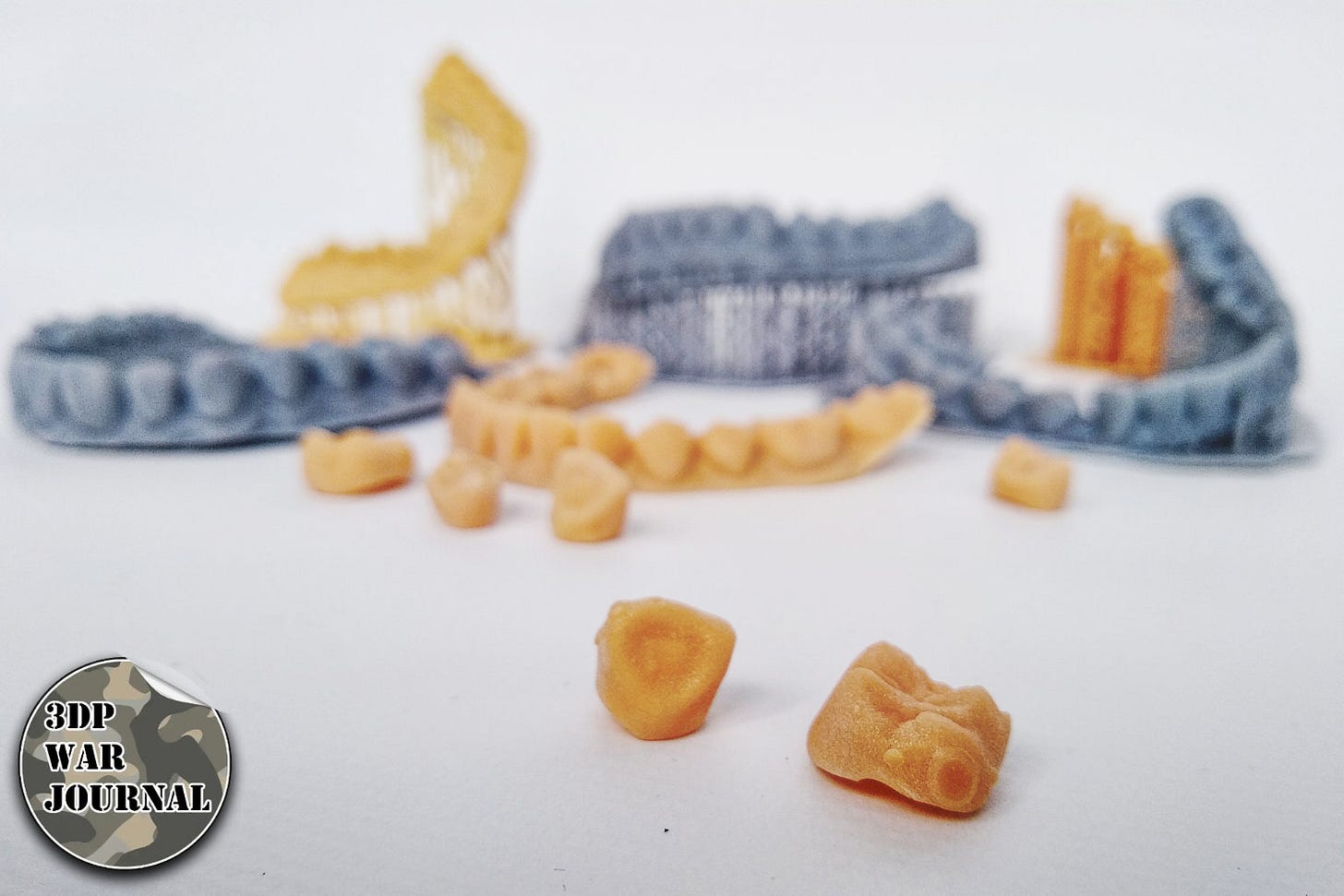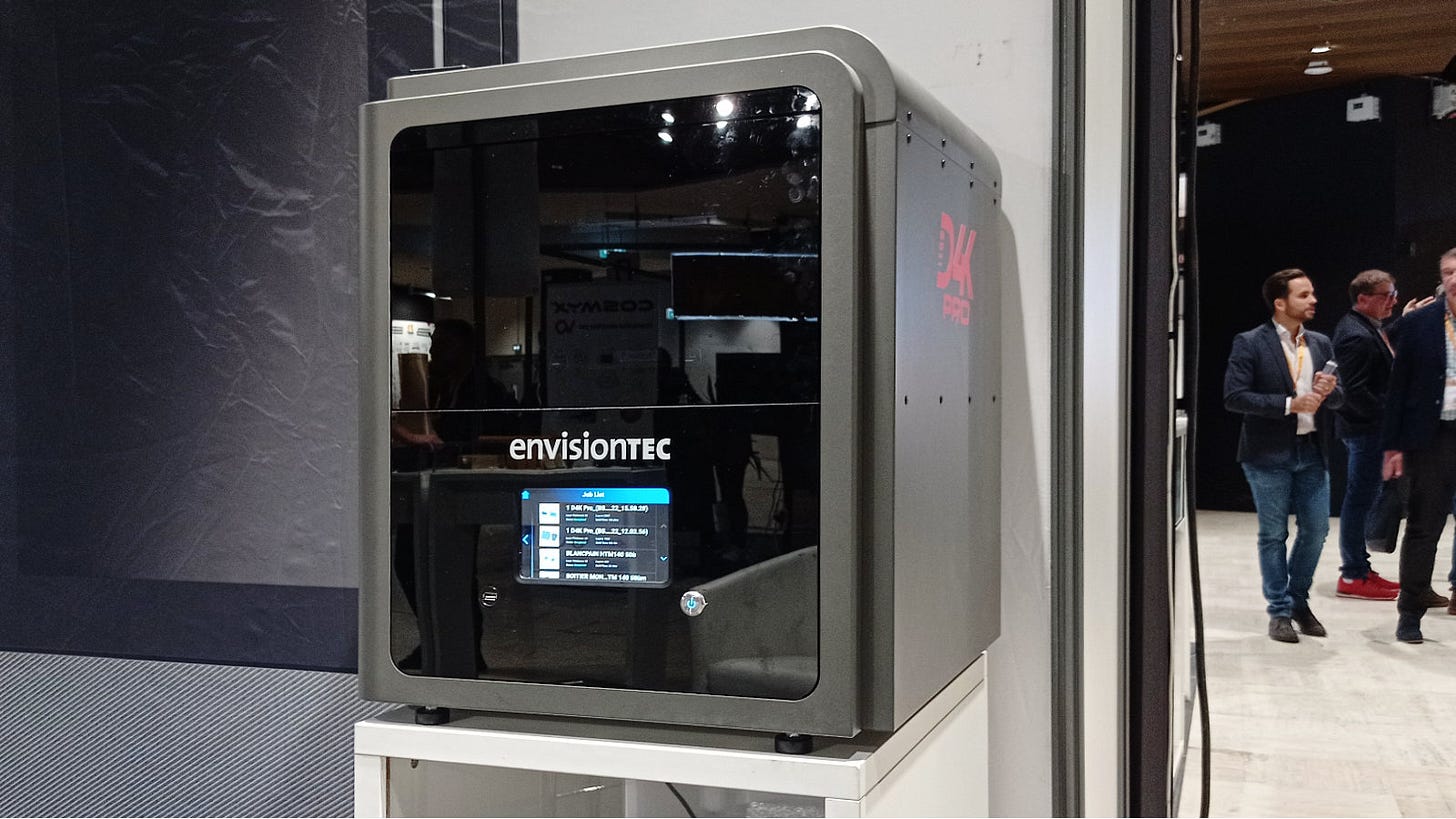Last week, SprintRay – a U.S. manufacturer of 3D printers owned by the Chinese conglomerate SoonSer – announced the acquisition of the entire dental portfolio that until recently belonged to EnvisionTEC, a legend of the photopolymer additive manufacturing market.
This is yet another consequence of the recent bankruptcy of Desktop Metal, which acquired EnvisionTEC just four years ago, paying what now seems like an astronomical $300 million in cash and stock.
Today, what was meant to be the pillar of the American unicorn’s expansion has instead become the prize of its Asian competitor.
And the funniest part is that in December 2021 a German court issued a preliminary injunction prohibiting SprintRay from selling, importing, using, or storing its dental systems in Germany. The injunction was requested by Desktop Metal, which accused SprintRay of infringing EnvisionTEC’s patents.
The dispute concerned continuous resin curing using light (DLP), specifically the layer separation process. Desktop Metal invoked its patents, including the historic “US7892474B2.”
Well, that’s how it goes in the 3D printing industry. Today you accuse someone of patent infringement – tomorrow your assets end up in a fire sale, picked up for 1 cent on the dollar by the very same people you were suing.
Greetings to Rehovot 👋😉
To understand the importance of the recent acquisition, one has to look back two decades and revisit the history of 3D printing adoption in dentistry. At the beginning of the 2000s, additive technologies were still largely a curiosity – used mainly for prototyping in aerospace, automotive, or medical industries.
Dentistry, with its precision, demand for customization, and mass need for prosthetics, crowns, and aligners, quickly proved to be a natural field for the technology’s implementation.
One of the pioneers of this sector was EnvisionTEC, founded by Ali El-Siblani. Siblani, a Lebanese immigrant, began his career in the 3D printing industry working at Helisys, a company utilizing LOM (Laminated Object Manufacturing) technology. In 1999, he filed his first patent describing the curing of successive resin layers using light emitted by a DLP (Digital Light Processing) projector.
In the early 2000s, Siblani established EnvisionTEC. The first 3D printer in this series was introduced in 2002, using DLP technology from Texas Instruments.
Over the years, EnvisionTEC secured dozens of patents that defined the foundations of this technology. Thanks to them, 3D printers began producing orthodontic models, surgical guides, and precise prosthetic elements that are now everyday tools in clinics and labs.
In 2021, it seemed that EnvisionTEC was entering a new era. Desktop Metal, an American unicorn specializing in metal 3D printing, acquired the company for about $300 million. The transaction was supposed to create a global giant.
Reality turned out to be far more brutal.
Desktop Metal quickly began sinking under financial troubles caused by excessive ambitions, costly acquisitions, and mismatched business models.
In the meantime, EnvisionTEC itself lost ground due to the rise of Formlabs, Anycubic, Phrozen, and Photocentric. Although its technology portfolio remained rich – with more than 140 patents, most related to layer separation processes in photopolymer printing – lack of investment and ownership chaos led to a rapid downfall.
When Desktop Metal declared bankruptcy, EnvisionTEC was put up for sale. Some of its assets were acquired by Anzu Partners, while SprintRay grabbed the most valuable part – the dental portfolio.
SprintRay’s payback
The irony is that just a few years ago, SprintRay was EnvisionTEC’s opponent in court.
In December 2021, Desktop Metal and EnvisionTEC accused SprintRay of infringing patents related to the “layer separation process” in its Pro 95 and Pro 55 printers. The dispute concerned a key technological solution enabling smooth build plate movement and, therefore, faster and more precise printing.
A German court even issued a temporary ban on selling these devices in that market. SprintRay, then a rising star in the dental sector, had to defend itself against accusations of violating patents that EnvisionTEC had proudly developed since the early 2000s.
Today, the situation looks grotesque. That same SprintRay is taking over the remains of the legendary company that once tried to block its market entry.
The patents that were once the subject of disputes are now in its portfolio. EnvisionTEC, once an icon and pioneer, ends up as a technology supplier for a company that not long ago was seen as a “Chinese pretender” in the industry. History could hardly have written a more ironic scenario.
Founded in 2014 in Los Angeles, SprintRay focused exclusively on dentistry from the very beginning. Its goal was to simplify 3D printing so that it could be used in everyday clinical practice.
Thanks to this, the brand quickly gained popularity among dentists and technicians, offering compact and easy-to-use printers along with its own materials ecosystem.
In 2020, the company was acquired by the Chinese manufacturer SoonSer, which brought in capital, technological expertise, and manufacturing capabilities.
Today’s acquisition of EnvisionTEC’s dental portfolio is not just an expansion, but a triumph.
SprintRay not only gains access to technology that once formed the basis of lawsuits against it, but also becomes the heir to a brand that shaped the entire sector.
The downfall of EnvisionTEC symbolizes the twilight of pioneers who laid the foundations of today’s market but failed to keep pace with modern competition and financial realities.
The fact that it is SprintRay’s Chinese owner now reaping the rewards gives the whole event an additional, almost tragicomic undertone.
We live in times where old patent disputes lose their meaning in the face of the brutal logic of bankruptcies and acquisitions.
Patents that were once weapons in courtroom battles now serve merely as bargaining chips in subsequent transactions.
This story is one of market unpredictability, of irony, and of the thin line between success and failure. It is also a reminder that in the world of technology, nothing is guaranteed forever – even legends can vanish, and their legacy can become a trophy for former rivals.
#7. Continuous Composites has secured a new patent
Continuous Composites has secured a new patent, US 12403651 B2, for its innovative "Continuous Composite 3D Printing" (CC3D) technology. This method simultaneously extrudes a continuous secondary material, like carbon fiber or fiber optics, encased in a cured polymer resin. Unlike traditional layer-based printing, CC3D creates optimized, continuous paths to produce exceptionally strong, lightweight, and multifunctional structures without support materials.
READ MORE: www.fabbaloo.com
#6. NEVO3D presents new industrial FFF 3D printer
The Austrian manufacturer NEVO3D has launched its new flagship industrial FFF 3D printer, the N200. Designed for large-format parts and series production, it features a substantial 800 × 500 × 500 mm build volume and a heated chamber up to 100°C. Key innovations include a novel "belt-free" drive system for improved precision, an IDEX system for parallel printing and soluble supports, and a REVO nozzle for easy material changes. Priced at €79,980, it targets industrial clients needing large prototypes and functional serial parts.
READ MORE: www.3druck.com
#5. 3DQue has launched AMS Mapping
3DQue has launched AMS Mapping, a new feature for its AutoFarm3D software that automates multicolor printing for Bambu Lab users. This innovation eliminates the need to reslice files or manually assign filaments when printing across a farm. The system automatically maps the correct colors to available spools, regardless of their AMS slot. It features a centralized job queue with automatic routing, on-the-fly color changes, and filament tracking.
READ MORE: www.voxelmatters.com
#4. Rosotics secures defense contract for naval 3D printing
Rosotics has begun a manufacturing and testing phase under a DPAS-rated contract with Fluor Marine Propulsion. The project focuses on additively manufacturing high-strength, manganese-rich steels like HY-80 and HSLA-80, which are critical for US Navy nuclear submarine hulls. Using its unique induction-based wire architecture, Rosotics aims to overcome the challenges of 3D printing these hard-to-weld alloys. A new heavy-duty print center in Florida is also planned.
READ MORE: www.3druck.com
#3. Ursa Major expands hypersonic production with EOS and AMCM
Ursa Major is purchasing three additional AMCM M 450-4 FLX machines to produce components for hypersonic vehicles at its Ohio facility. This expansion, which includes utilizing EOS's toolpath API for custom parameters and beam shaping technology, aims to enhance production speed and achieve novel part properties. As a key supplier for the U.S. Department of Defense, Ursa Major's adoption of additive manufacturing is pivotal for advancing hypersonic capabilities, solidifying AM's role in critical defense applications.
READ MORE: www.3dprint.com
#2. SprintRay acquired EnvisionTec dental portfolio
SprintRay has acquired the EnvisionTec dental portfolio following Desktop Metal's Chapter 11 filing. The strategic purchase includes patents, trademarks, and inventory related to ETEC's dental 3D printers and FDA-cleared materials, such as the Flexcera resin. This move ensures continued support and resin production for existing EnvisionTec customers while significantly strengthening SprintRay's position in the dental lab market. The acquisition underscores SprintRay's focused commitment to advancing and providing reliable, regulatory-compliant 3D printing solutions for dentistry.
READ MORE: www.tctmagazine.com
#1. Pac-Dent acquired Ackuretta
Dental supplier Pac-Dent has acquired 3D printing startup Ackuretta. This move integrates Ackuretta's all-in-one system—printers, resins, software, and post-processing equipment—into Pac-Dent's broad portfolio. The acquisition emphasizes an open-system vision, allowing compatibility with various hardware and materials, which provides dentists freedom of choice. Pac-Dent aims to cross-sell these validated digital workflows to its existing customer base, enhancing its offering of integrated end-to-end solutions for labs and practices, and solidifying its role in the growing digital dentistry market.
READ MORE: www.3dprint.com






